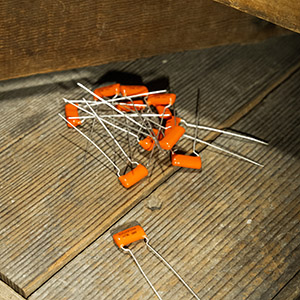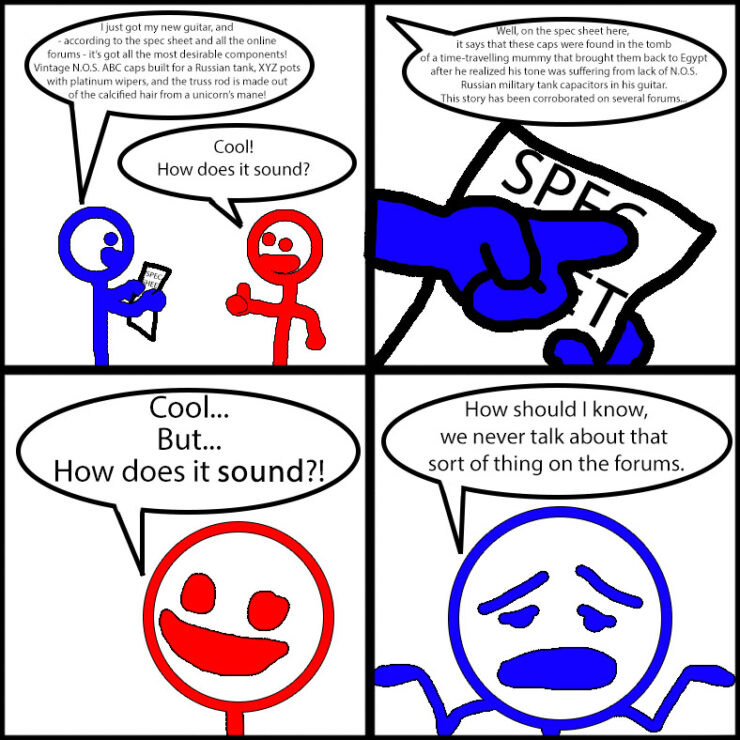
By Jason Lollar
In my previous post, I wrote about choosing the best pots for your sound (If you haven’t done so already, you can read it HERE). In this post, I will focus on capacitors (or caps), the different types/values, and how they work to affect and influence your guitar tone.
Choosing the Right Capacitors

Tone capacitors are wired to the tone pot so the signal from the guitar pickup will pass high frequencies to ground when the tone pot is rolled down. The higher the value of the cap the wider the range of frequencies that get rolled off to ground. With lower value caps only the highest frequencies get cut off.
As a secondary effect, the higher the value cap, the more frequencies are rolled off with a shorter throw on the pot. So, with a high value cap the tone control can act more like an off or on switch. With a lower value cap, you can throw a lot farther on the pot, so you can dial in the tone with finer adjustment.
Most Fenders use a high value cap, which is a .047. Gibsons typically use a .022. For about the last 20 years, we’ve been using .015 in our shop on any guitar with any pickup design and are always happy with the results.
A constant discussion goes on about how caps made of different materials (oil-in-paper, ceramic, metal disc, etc.) sound different in guitar circuits. So, about 10 years ago, I wired up a rotary switch with 5 or 6 different caps from different manufacturers and made of different materials, all of which were measured on a meter to have the exact same capacitance rating. I wired the switch in to a Strat so we could switch from cap to cap and listen for any difference.

We had 6 or 7 people listening, and at first we thought we were hearing subtle differences. But as the test went on, we concluded that what we were actually hearing was differences in how the pick was hitting the string each time. When you are listening for subtle differences it’s easy to miss what variables are involved. Unlike in certain positions in amplifiers circuits – where the entire signal is run through the cap and amplified a million times, in a guitar tone control, the high end passes through the cap and bleeds off to ground, and is never heard.
Different value caps will create different resonant peaks (a small bump up in the frequency range just before the cutoff frequency) but this is not noticeably so with different materials of the same value, so this lends itself to the belief that a cap’s value is infinitely more important than its material type. When it comes to the expensive caps versus the budget versions, the real benefit of more expensive caps isn’t “better” tone, it’s higher quality manufacturing, tighter tolerances, and lower fail rate. Otherwise, don’t believe the hype, all things equal, they all pretty much sound the same.
